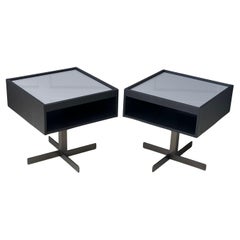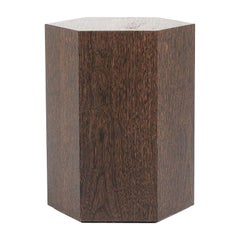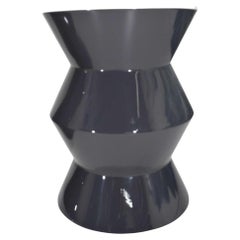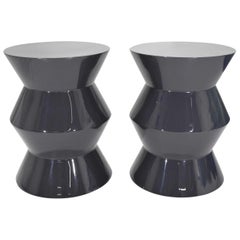Minotti End Table
21st Century and Contemporary Italian Modern End Tables
Chrome
2010s Italian Modern Side Tables
Wood
Recent Sales
21st Century and Contemporary Modern End Tables
Wood, Lacquer
21st Century and Contemporary Modern End Tables
Wood, Lacquer
2010s American Modern End Tables
Marble, Metal
21st Century and Contemporary Italian Modern End Tables
Marble, Metal
People Also Browsed
21st Century and Contemporary American Wall Lights and Sconces
Metal, Nickel, Brass
21st Century and Contemporary French Mid-Century Modern Wall Lights and ...
Metal, Aluminum
Antique Early 1900s German Art Nouveau Chandeliers and Pendants
Brass
Vintage 1960s French Mid-Century Modern Wall Lights and Sconces
Steel
2010s American Modern Chandeliers and Pendants
Brass
Vintage 1950s European Mid-Century Modern Sofas
Fabric, Beech
21st Century and Contemporary Indian Modern Side Chairs
Upholstery, Wood
Vintage 1970s Italian Mid-Century Modern Lounge Chairs
Wool, Alpaca, Mohair
21st Century and Contemporary Side Tables
Metal
Vintage 1950s Brazilian Mid-Century Modern Lounge Chairs
Wood, Fabric
20th Century Italian Mid-Century Modern Chandeliers and Pendants
Crystal, Brass
21st Century and Contemporary European Modern Coffee and Cocktail Tables
Metal
Vintage 1950s American Mid-Century Modern Credenzas
Walnut
Vintage 1960s Dutch Mid-Century Modern Armchairs
Bouclé
Vintage 1960s Dutch Mid-Century Modern Armchairs
Fabric, Wood
21st Century and Contemporary Portuguese Modern Chandeliers and Pendants
Fiberglass
A Close Look at Modern Furniture
The late 19th and early 20th centuries saw sweeping social change and major scientific advances — both of which contributed to a new aesthetic: modernism. Rejecting the rigidity of Victorian artistic conventions, modernists sought a new means of expression. References to the natural world and ornate classical embellishments gave way to the sleek simplicity of the Machine Age. Architect Philip Johnson characterized the hallmarks of modernism as “machine-like simplicity, smoothness or surface [and] avoidance of ornament.”
Early practitioners of modernist design include the De Stijl (“The Style”) group, founded in the Netherlands in 1917, and the Bauhaus School, founded two years later in Germany.
Followers of both groups produced sleek, spare designs — many of which became icons of daily life in the 20th century. The modernists rejected both natural and historical references and relied primarily on industrial materials such as metal, glass, plywood, and, later, plastics. While Bauhaus principals Marcel Breuer and Ludwig Mies van der Rohe created furniture from mass-produced, chrome-plated steel, American visionaries like Charles and Ray Eames worked in materials as novel as molded plywood and fiberglass. Today, Breuer’s Wassily chair, Mies van der Rohe’s Barcelona chair — crafted with his romantic partner, designer Lilly Reich — and the Eames lounge chair are emblems of progressive design and vintage originals are prized cornerstones of collections.
It’s difficult to overstate the influence that modernism continues to wield over designers and architects — and equally difficult to overstate how revolutionary it was when it first appeared a century ago. But because modernist furniture designs are so simple, they can blend in seamlessly with just about any type of décor. Don’t overlook them.
Finding the Right End-tables for You
Beyond just providing additional tabletop space for your living room, an attractive vintage end table can help you organize as well as display books and decorative objects.
The term “end table” is frequently used interchangeably with “coffee table,” and while these two furnishings have much in common, each offers their own distinctive benefits in your space.
Your end table is likely going to stand as tall as the arms of your sofa, and its depth will match the seating. These attributes allow for tucking the table neatly at the end of your sofa in order to provide an elevated surface between your seating and the wall. End tables are accent pieces — they’re a close cousin to side tables, but side tables, not unlike the show-stealing low-profile coffee table, are intended to be positioned prominently and have more to do with the flow and design of a room than an end table, which does a great job but does it out of the way of everything else.
End tables with a drawer or a shelf can easily stow away books or television remotes. Living-room end tables frequently assist with lighting, specifically as they’re often positioned adjacent to a wall. Their height and compact tabletop render them ideal for table lamps and plants, particularly if parked near a window.
And given their practicality, there is no shortage of simple, streamlined end tables from mid-century modern favorites such as Baker Furniture Company, Dunbar and Knoll that will serve your clutter-clearing minimalist efforts or wide-open loft space well. But over the years, furniture designers have taken to venturesome experimentation, crafting tables from fallen trees, introducing organic shapes and playing with sculptural forms, so much so that your understated end table might eventually become the centerpiece of a room, no matter where you choose to place it. One-of-a-kind contemporary designs prove that there are endless options for what an end table can be, while furniture makers working in the Art Deco style have proven that end tables can be stacked, staggered and nested at will, creating all kinds of variations on this popular home accent.
Find an extraordinary variety of antique, new and vintage end tables on 1stDibs today.
Read More
New Orleans’ Lee Ledbetter Makes Design Magic by Mixing Past and Present
The Louisiana-born and -bred architect talks to 1stdibs about the art of making timeless places that matter.
How a Modernist Hamptons Home on the Water Became the Ideal Weekend Refuge
Damon Liss and Stelle Lomont Rouhani Architects collaborated on this serene getaway for a minimalism-minded Manhattan family of four.
Desert Modern Designer Arthur Elrod Finally Gets His Day in the Sun
The Palm Springs interior decorator developed a mid-century style that defined the vacation homes of celebrities and other notables, including Bob Hope and Lucille Ball.
Artelinea, Mexico City’s One-Stop Contemporary Design Shop, Paves the Way for a New Wave of Mexican Designers
Wielding her influence on the international scene, founding partner Andrea Cesarman expands the platform for Mexican artisans.
From the Hamptons to Palm Springs, FormArch’s Homes Embody Both Comfort and Cool
The houses from this New York studio cloak modernist tendencies within what are often more traditional trappings.
Wendy Haworth’s Luminous Spaces Epitomize L.A. Ease
For the California designer, authenticity and the unusual are the keys to cool, timeless interiors.



